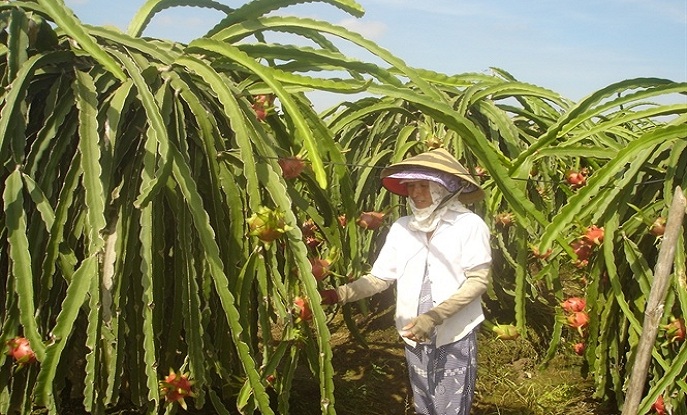OPPOTURNITIES TO BOOST FRUIT AND VEGETABLE EXPORT TO EU
12 Mon, 2019
The EU is a huge market of vegetables and fruits in the world, but the export of Vietnamese vegetables and fruits to the EU is still very modest.

Dragon fruit is a fruit being exported to the EU.
According to the Ministry of Industry and Trade, in the first 11 months of this year, among the 10 largest single markets of Vietnamese vegetables and fruits, only one representative from the EU, the Netherlands (ranked fifth), with export value of $ 74 million. Compared to the total value of fruit and vegetable exports in 11 months was 3.41 billion USD, it is clear that the export value as above to the Netherlands is quite modest.
Meanwhile, the EU is a huge market of vegetables and fruits in the world. According to the Centre for the Promotion of Imports from developing countries of the EU (CBI), with a population of over 500 million people, the EU accounts for 45% of the global value of trade in fruits and vegetables. Five of the top 10 importing countries of vegetables and fruits are in the EU.
In the last 5 years, the total value of EU fruit imports has increased faster than compared the amount of imports, approximately at 30% and 24% respectively. This is due to the increase in EU imports of high value fruits such as avocado, mango and lemon; higher valuation of the US dollar against the euro; Harsh climates lead to higher production costs...
The main reason for the sharp increase in imports of fruits and vegetables, especially EU fruits, is that the output of vegetables and fruits in this region has almost not increased.
Although agricultural production is a basic industry, the number of fruit and vegetable farms in the EU is decreasing. EU farmers choose to use technology and breed development to increase productivity, extend the production season, improve product quality and characteristics. These efforts made the product quality higher, but the output hardly increased. Therefore, fruit production in the EU in the long term tends to decrease slightly, contributing to the demand for fruit imports.
It is worth noting that the EU imports a lot of fresh fruit from developing countries. Products favored by consumers and potential in the EU include: avocado, mango and sweet potato. The total value of imports from developing countries increased by 38% in five years to 18.2 billion euros in 2018, significantly larger than 3.1 billion euros of imports from developed countries outside the EU (up 20 % In the same period). Fresh fruits have a higher impact on import value than fresh vegetables, as the EU itself provides more vegetables than fruits.
The EU imports a lot of fresh fruit from developing countries because many important tropical fruits depend on specific seasons or tropical climates, which cannot be found locally.
One more point to note is that the import of fruits into the EU market mainly through the Netherlands because the Netherlands is considered the gateway to the EU market for fruit and vegetables. Specifically, more than 20% of fresh fruits and vegetables provided by developing countries to the EU through the Netherlands. The value of Dutch fresh fruits and vegetables imported from developing countries has increased by 55% between 2014 and 2018. From the port of Rotterdam, the main point of entry, Dutch and international traders will distribute the products to the rest of the EU.
Therefore, Vietnamese exporters who want to export fruits and vegetables to the EU need to have a research plan and access to importers, distribution channels and retail systems in the Netherlands, in order to build a export strategy to the Netherlands and thereby to the EU. In addition, Belgium and Spain are also countries that import tropical fruits and vegetables and re-export to other countries in the EU.
In terms of consumption, Germany is the largest market for fresh vegetables and fruits in the EU. In 2018, Germany imported 9.2 million tons of fruits and vegetables, accounting for 16% of total EU imports. In particular, Germany has directly imported 2.4 million tons of fresh vegetables and fruits from developing countries.
According to the Ministry of Industry and Trade, in order to export fresh fruits and vegetables to the EU market, exporters need to pay attention to: Must comply with the requirements of food safety, product quality; social, environmental and business compliance. Businesses can update their full list of legal requirements at the EU Trade Helpdesk portal.
Source: https://m.nongnghiep.vn
Related Post
The true fishmeal carbon footprint
The established Life Cycle Analysis (LCA) methodology to assess the fishmeal carbon footprint only accounts for the vessel fuel and post-harvest processing energy while ignoring the carbon sequestration potential of fish.
View more
Freezing Tropical Fruits: Convenient and Effective Solution with Octofrost Machines
Tropical fruits are always a great choice for providing nutrition and fresh flavor to daily meals.
View more


